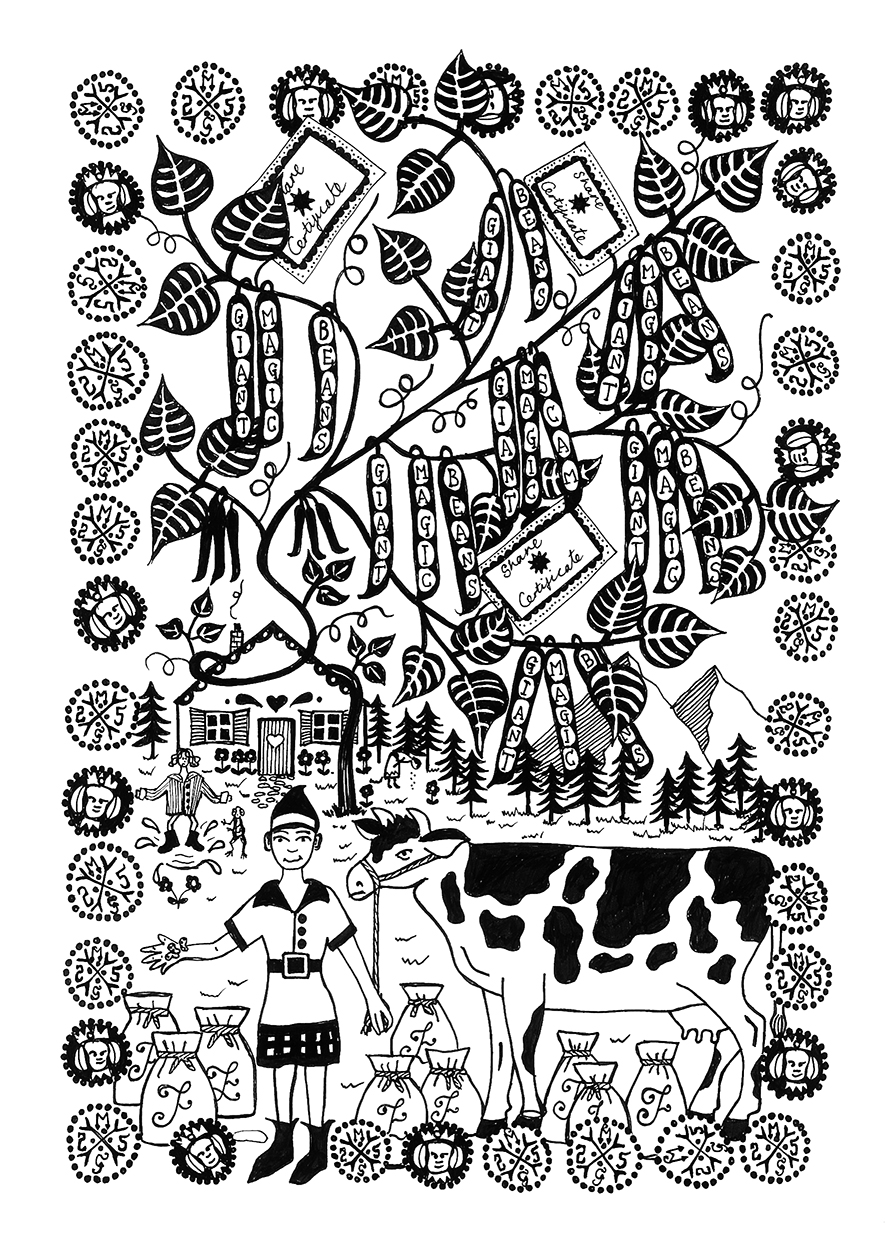(Or How Jack Slayed The Corporate Beast And Made Massive Returns)
To celebrate the launch of our new book, Happy Ever After: Financial Freedom Isn’t A Fairytale, we are posting excerpts from the book, specifically the fairytale segments of our favourite spoiled little princess being taught about money, savings, and investing by her talking pet frog, Charlie Croaker.
Jack And The Giant Bean Stock
Charlie the talking frog realized that the princess was never going to learn about real life by looking out of the window of an enchanted castle.
“You need to change into something less princess-ey, so we can go outside,” he told the princess.
“But I don’t have anything less princess-ey,” she complained. “Why would I? I’m a princess.”
“Ok. Don’t worry, I’ll magic something up.”
The princess was so disappointed. She was past the point of expecting a pumpkin to be turned into a carriage, but when Charlie had mentioned “magic” she hadn’t imagined it would involve borrowing some of her dad’s old clothes and being pushed into a puddle.
“You’re too clean,” Charlie had laughed.
“That really isn’t much of an apology,” the princess said, “And I’ve never thought being too clean could be a problem before.”
At that moment, a sad looking boy arrived at the puddle with an even sadder looking cow. “I don’t suppose you want to buy my cow, do you? No, you look too clean to buy a cow. I’d better do as my mum asked, and take him to the market,” and he continued along the path.
“Who’s that?” asked the princess.
“That’s Jack,” explained Charlie. “He’s just called ‘Simple Jack’ at the moment, but in a short time he’ll be world-famous as ‘Jack The Giant Killer’.”
“Oh no! Is he dangerous? Did my father ask him to kill a giant to win my hand in marriage?” asked the princess.
“No. His mother has sent him to market to sell the family cow, but no one wants to buy it, so he eventually accepts some magic beans for the cow.”
“‘Magic beans’?” asked the princess. “Are they even a thing?”
“Of course they’re not,” grunted Charlie, “but Jack didn’t know they were a scam, and nor did anyone else. When Jack got home with neither the cow nor any money, his mother was furious and just threw the beans out of the window. When he woke up…”
“I know this! The beans had grown into a huge beanstalk, reaching right up into the clouds, where a giant lived, who Jack killed and stole his treasure, a sack of gold coins? I’m sure I heard that story somewhere before,” the princess mumbled as she began to realize how silly the whole story sounded.
“Well, that’s fair, you might have, because Jack told that story,” Charlie explained. “He woke up the next morning to find a huge beanstalk, with beans growing all over it, enough that he and his mum could eat that day, and with enough left over for the next day.”
“So no giant?” asked the princess.
“Not yet. It turned out that the beans weren’t edible. He got sick and his mum got really sick, so sick she almost died. This made Jack furious, and he chased down the man who sold him the magic beans, who was really sorry, and told him which company had sold him the magic beans, Giant Agricultural Corporation.”
“Oh… that kind of giant,” said the princess, less impressed.
“Jack sued the company for a sack of gold coins, and then used the money to form an activist investment fund that fought other giant corporations that treated people badly, and made a lot of money in the process,” Charlie explained.
“And the story about the beanstalk and the real giant?” the princess asked.
“That was just a fairytale, princess. Jack made enough money from his corporate giant-killing that he never had to work again, but he didn’t want people to know that, so he made up the fairytale about the beanstalk to keep people away.”
“He made enough money that he never had to work again? How much is that, Charlie?”
“Finally,” Charlie gurgled. “You’re asking the right kind of question.”
In the illustration on the cover of Happy Ever After, we show our princess at the start of some forests. She doesn’t know what she’s about to walk into, and she definitely doesn’t know how to get out of the woods once she steps in.
Like the rest of us.
The goal of Happy Ever After is to show a way out of the woods, to shorten the path so we aren’t lost and looking for help our whole lives. I wrote it for my daughter, the inspiration for the princess in the stories, to understand how she can make her own way in the world, and never feel lost. I hope you can use it to do the same for your little princesses and princes too.



